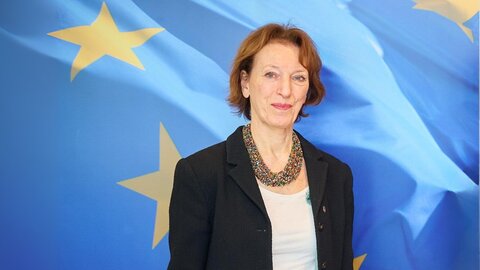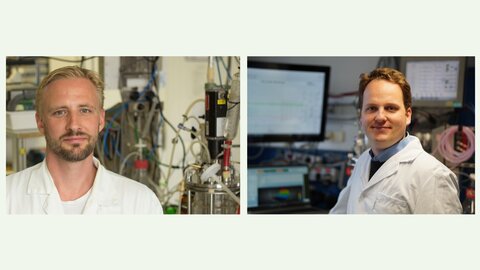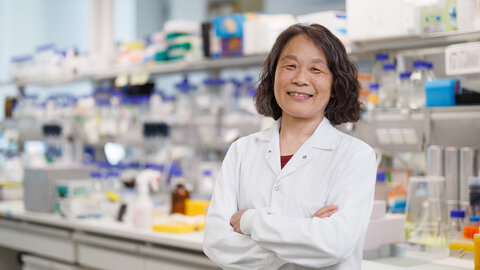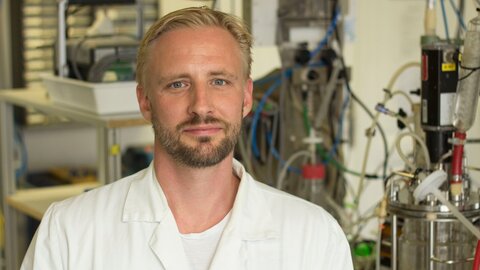Nanostructures that pretend to be lenses and make ultrafast processes visible
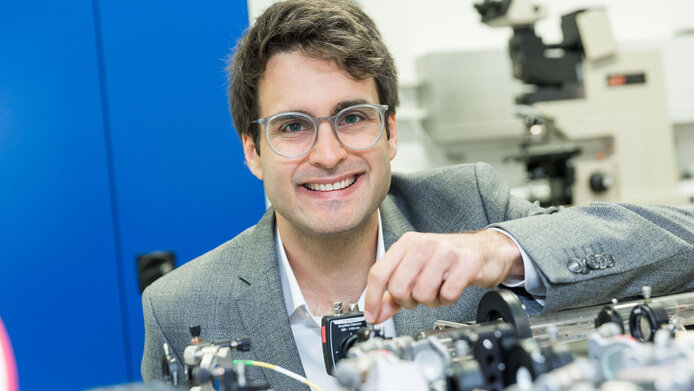
Mr Ossiander, you plan to measure effects that are extremely small and extremely short-lived. What is the difficulty in that?
Marcus Ossiander: Each of these areas, spatial and temporal resolution, has its own limits. That’s why you need light with a short wavelength. This radiation becomes difficult to handle at some point because it is quickly absorbed, for example by the air. Good temporal resolution is also difficult to achieve with high-quality optics. It is difficult to meet all the requirements, but it is necessary if you want to observe chemical reactions that happen very quickly.
You use light in the extreme ultraviolet spectrum. Why?
Ossiander: Extreme ultraviolet light is interesting because it has a short wavelength and because it is technically possible to create time resolutions in the attosecond range. For comparison: An attosecond is to a second as a second is to the age of the universe. That may sound a bit abstract. Why would we want to measure something like that? But if we look at how quickly a photon is absorbed into an atom, that takes a few 100 attoseconds. Many processes that we encounter today are based on time scales such as these. And we have light sources that can do that. That is a strong motivator for me.
You said this light is difficult to handle. So you switch to methods that are also used in virtual reality goggles.
Ossiander: Very few optics can be used for extreme ultraviolet light because this kind of light is absorbed by almost every material. All optical elements have to be very thin. We plan to use nano-optics, which are also used for virtual reality. These are nanostructures that pretend to be a lens but are actually flat. To do this we apply the same processes that are used to create computer processors.
You now have several years to work on your project. How will you approach the problem?
Ossiander: The first step is relatively easy. I am currently at Harvard and will move to Austria. Then we plan to start by designing nano-optics. We are thinking about what they should look like and how we can make them. At the same time, we’ll start getting the extreme ultraviolet light sources up and running. This will take some time. I did my doctorate in this field and the people at Graz University of Technology, such as Martin Schultze, Birgitta Schultze-Bernhard, are also very good at this. But this is so close to the limit of what we are capable of that we will need time. After all, the goal is to build a functioning microscope.
How will the START Prize change your research and your life?
Ossiander: The award gives me a lot of independence. I will be able to organise some of my work myself, which is a nice thought. I’m looking forward to putting together a small team. For me, it’s a way to develop my own profile and lay the groundwork for the things I want to do in the future.
And what motivates you for the future?
Ossiander: I think it’s nice that we are doing very fundamental things in attosecond physics. At first glance, it seems like the application is still very far off in the future, but if we go just one step further, we can have solar cells that we can study, chemical reactions like catalysis that we can improve on and communication. We can ask ourselves just how fast communication can take place. There are some problems very close to real life that we can solve with this kind of physics research.
Marcus Ossiander completed his doctorate in ultrafast physics in Munich and has been researching metaoptics at Harvard University for two and a half years. His work combines new technical approaches such as metaoptics with very fundamental questions, which produces a “nice balance” as he puts it. He will conduct his START project at Graz University of Technology.
The project
Ultrafast physical processes are a point of departure for many possible applications. But observing these processes microscopically requires the development of completely new methods that can image not only the smallest atomic building blocks but also processes that last only trillionths of a second. One possibility is microscopes that use very high-energy ultraviolet light (EUV), which, conventional lenses, however, cannot concentrate. Project leader Marcus Ossiander plans to use nanomaterials to make very thin lenses for developing a microscope.
The START Prize
The START Programme of the Austrian Science Fund FWF is aimed at outstanding young researchers, giving them the opportunity to plan their research over an extended period and with a high degree of financial security. It is endowed with up to EUR 1.2 million and is one of Austria’s most prestigious and most highly endowed awards alongside the Wittgenstein Award.

